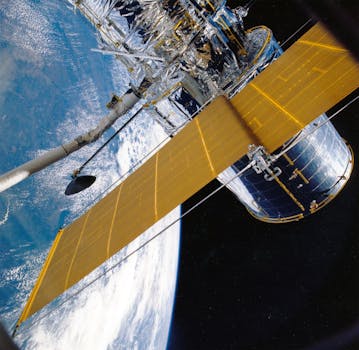LEO Satellites: Revolutionizing Global Connectivity with Low Earth Orbit Technology

LEO Satellites: Revolutionizing Global Connectivity with Low Earth Orbit Technology
LEO satellites, or Low Earth Orbit satellites, are a type of satellite that orbits the Earth at an altitude of around 160 to 2,000 kilometers. This relatively low altitude allows LEO satellites to provide low latency and high-speed connectivity, making them an attractive option for a wide range of applications, from telecommunications and navigation to Earth observation and scientific research.
The use of LEO satellites is not new, but recent advancements in technology have made them more accessible and affordable. With the launch of constellations such as SpaceX’s Starlink and OneWeb, LEO satellites are poised to play a significant role in bridging the digital divide and providing global connectivity. In this article, we will delve into the world of LEO satellites, exploring their benefits, applications, and the impact they are having on various industries.
Benefits of LEO Satellites
One of the primary benefits of LEO satellites is their low latency. Because they are in close proximity to the Earth, signals transmitted to and from LEO satellites experience much less delay than those transmitted to and from geostationary satellites, which are located around 36,000 kilometers above the equator. This low latency makes LEO satellites ideal for applications that require real-time communication, such as video conferencing, online gaming, and financial transactions.
Another significant advantage of LEO satellites is their high-speed connectivity. With the ability to provide speeds of up to 1 Gbps, LEO satellites can support a wide range of bandwidth-intensive applications, from streaming high-definition video to supporting remote work and online education.
Applications of LEO Satellites
LEO satellites have a wide range of applications across various industries. In the telecommunications sector, LEO satellites can provide broadband internet access to remote and underserved communities, helping to bridge the digital divide. They can also be used to provide backup connectivity during natural disasters or network outages.
In the navigation sector, LEO satellites can provide location-based services, such as GPS, GLONASS, and Galileo. They can also be used for Earth observation, providing high-resolution images of the Earth’s surface for applications such as environmental monitoring, agriculture, and urban planning.
In the scientific research sector, LEO satellites can be used to study the Earth’s atmosphere, oceans, and land surfaces. They can also be used to conduct space-based research, such as studying the effects of microgravity on living organisms.
Impact of LEO Satellites on Various Industries
The impact of LEO satellites on various industries is significant. In the telecommunications sector, LEO satellites are poised to disrupt the traditional satellite industry by providing low-cost, high-speed connectivity. This could lead to a significant increase in the adoption of satellite-based services, particularly in remote and underserved areas.
In the navigation sector, LEO satellites are expected to improve the accuracy and availability of location-based services. This could have a significant impact on industries such as transportation, logistics, and emergency services.
In the scientific research sector, LEO satellites are expected to provide new insights into the Earth’s atmosphere, oceans, and land surfaces. This could lead to a better understanding of the Earth’s climate, weather patterns, and natural resources.
Conclusion
In conclusion, LEO satellites are revolutionizing global connectivity with their low latency and high-speed connectivity. With their wide range of applications across various industries, LEO satellites are poised to have a significant impact on the way we communicate, navigate, and conduct scientific research. As the technology continues to evolve, we can expect to see even more innovative applications of LEO satellites in the future.





